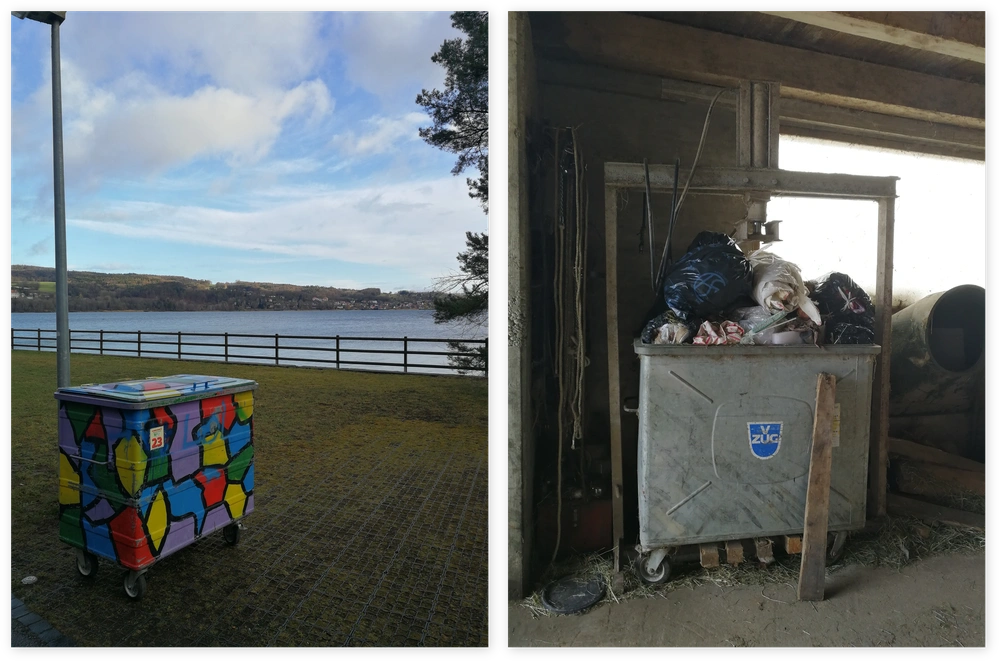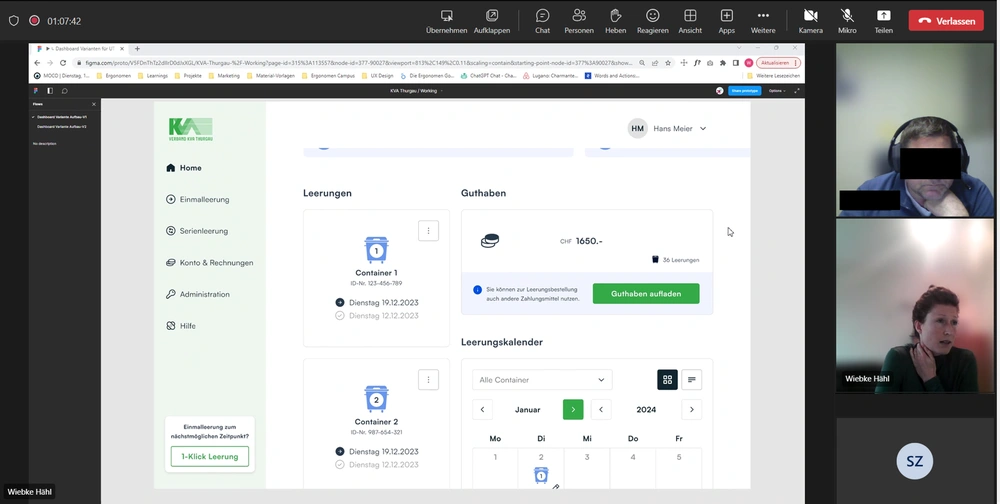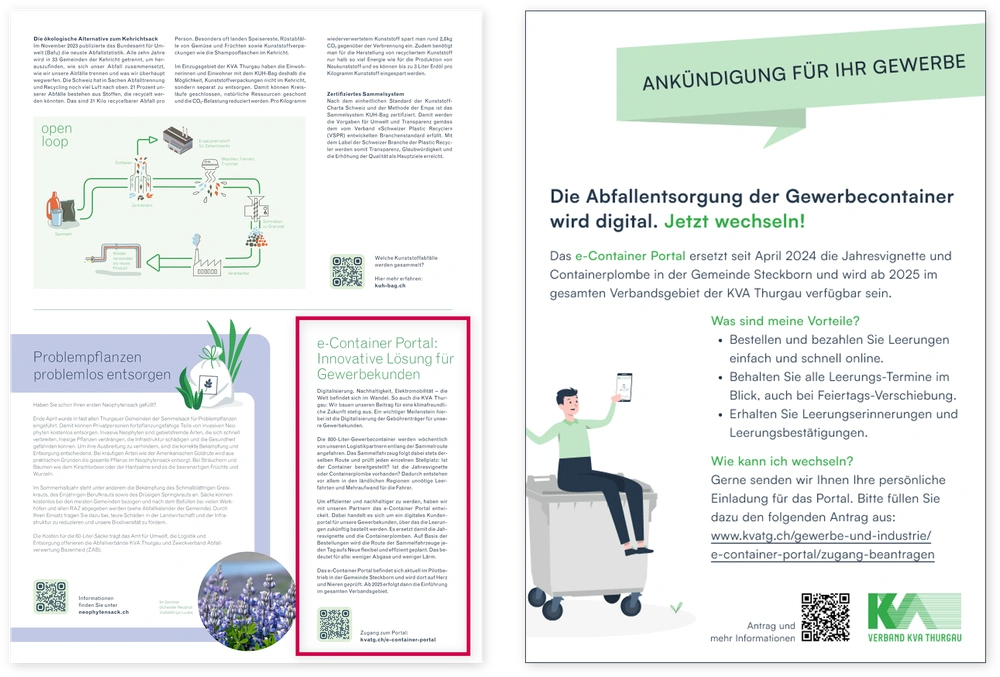Waste disposal is not an issue that people like to deal with voluntarily. Customers want as little hassle as possible and as much flexibility as possible. For the KVA Thurgau association, on the other hand, efficiency and sustainability take center stage. Can't satisfy everyone? Yes, you can!
The aim of the KVA Thurgau was to digitize the fee carriers for large and commercial customers. The e-container portal is intended to replace the annual vignettes and container seals with an online booking system for container emptying and at the same time enable efficient route planning for the collection vehicles. The major challenge was to ensure user acceptance - they liked the old process as it was. The portal should also be expandable so that it can be extended to include new functionalities and customer segments as part of KVA Thurgau's holistic digitalization strategy.
The digitization of the fee carriers followed the user-centered design process. The first step was to involve the target group in the project and to identify their needs. To do this, we chose a two-stage approach consisting of an online survey with over 100 KVA Thurgau customers and context analyses with customers on site. This approach enabled us to comprehensively gather customer requirements and gain insights into the context of use.

Fig. 1: Context analysis is always good for taking a new perspective.
Based on the findings of the user research, an initial solution concept was developed in a design sprint workshop together with all stakeholders. This was further developed by the Ergonomen and transformed into an interactive prototype. The aim was to make the concept experienceable in order to obtain user feedback from a usability test at an early stage.

Fig. 2: Remote usability test with the click prototype.
The findings from the first test were discussed with the stakeholders in the implementation workshop and the optimization measures for the portal concept were prioritized. A mature UI design was then developed for the concept, including illustrations for both desktop and mobile. The modular structure was recorded in a style guide and design system to ensure scalable reuse.
We supported the implementation by the front-end and back-end developers from Online Consulting AG with regular UX sparring. This ensured that user-friendliness was always taken into account, even during readjustments. Parallel to the implementation by our development partners, we took care of the UX writing and formulated all microtexts and content of the customer portal. A further usability test on the (almost) finished application showed that the web application is easy to understand and intuitive to use.
However, digitalization does not end with the launch of an application, but must also reach the end customer. In order to increase user acceptance, it is essential to professionally support the launch of the application and ensure a positive initial experience. To this end, we created help videos and FAQs and wrote the customer communication, which included the design and copywriting of letters and flyers.

Fig. 3: Anyone not in the KVA Thurgau customer database had to be informed via flyers and advertisements.
The customer portal went into pilot operation in Steckborn TG in April 2024. There it was put through its paces by commercial customers. Since then, waste disposal has been handled entirely via bookings in the portal. KVA Thurgau can report: It works - internally and for customers.
We got to the bottom of “it works” and asked the participants in the pilot phase about their experience in an online survey and selected interviews. The results were very positive. The steering committee has therefore decided to aim for a large-scale rollout in 2025.